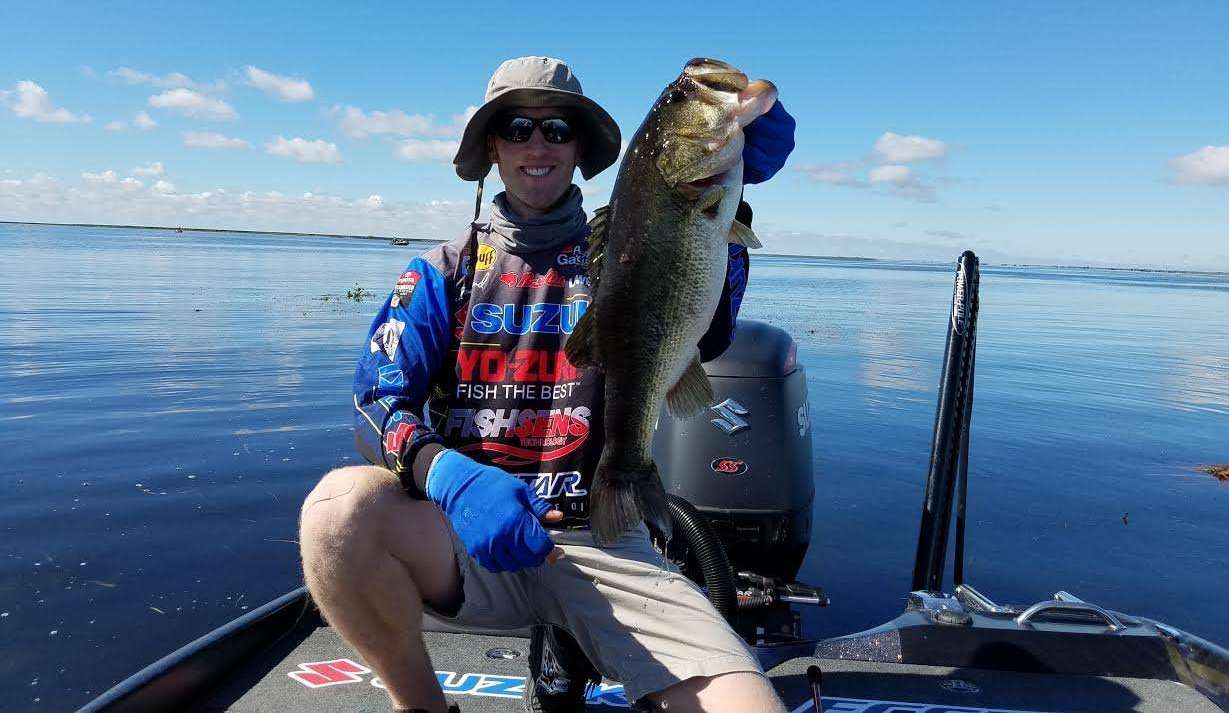
Fishing deep is my favorite way to sack a bunch of big ’uns, and the best offshore bite of the year is happening right now. Unfortunately for me, there aren’t any Bassmaster Elite Series tournaments this season where I can use what I’ve learned about sacking offshore bass to my advantage. But I believe some of the techniques I use will work for you.
Schools of bass gang up on offshore structure a few weeks after they finish spawning. In Tennessee where I live that happens sometime in May, and you can cash in on the schools through June. The offshore bite falls off in July and gets tough in August and September.
There is less current during the hottest months than in springtime because there’s less rainfall then. The oxygen level in deep water also starts to diminish. Both of these things cause the bass to scatter and move shallower. The point is that you need to get’em while they’re hot, and they’re hot right now.
I grew up fishing the Tennessee River reservoirs. Most of that time has been on Douglas, which is close to my home. But I love fishing Guntersville, Kentucky and Chickamauga, too. The whole Tennessee River chain lends itself to fishing offshore. It’s been a great place for me to refine deep techniques that work on most any lake that has offshore ledges.
The last time I got dialed in to an offshore bite on the Elite Series was BASSfest at Kentucky Lake in early June of 2015. I finished eighth in that one.
A lot of anglers use their electronics to look for cover at this time of year, things like stumps and brush piles. That’s a mistake. You should be looking for schools of bass. That’s what I do with the two Lowrance HDS-12 graphs on my console. I run both of them on split screen. One unit displays the lake chart and 2D sonar. The other displays down scan and side scan.
You’ll typically see schools of white bass, crappie and largemouth at this time of year. I’ve been using Lowrance graphs for over a decade, and I can tell which species of fish I’m looking at nine times out of 10.
The down scan mode is the best for this when the bass are deeper than 15 feet. When it’s shallower than that, the bass tend to move out from under the boat, and you can see them on side scan.
White bass and crappie tend to stack vertically when they school. The stack could 10 feet or more from top to bottom. And a school of crappie is always oriented to brush or some other cover. Bass generally don’t stack like that. They tend to be grouped up near the bottom.
If I’ve found a school of fish and I can’t catch them, I’ll drop the my FishSens SondeCAM HD Underwater Camera into the school so I can actually see what they are. That takes the guesswork out of it and tells me whether or not to come back later.
I look for schools of bass on flat points, channel swings and humps. I also try to find schools deeper than most other people are going to look. On Douglas, the bass always get really deep, so I’m used to doing that. That’s where my confidence lies.
Let’s say I’ve been searching for bass for several hours, and I’ve found multiple schools in 20 feet of water. That doesn’t mean every school of bass on the lake is 20 feet deep. But most people will get dialed in to that 20-foot depth and never look deeper.
In a situation like that, I’ll look for bass 25 feet and deeper. If I can find them, I’ll usually have them to myself. That’s exactly what happened when I finished eighth at BASSfest at Kentucky Lake. Most of the guys fished for schools of bass that were 15 to 20 feet deep. I fished for schools that I found 25 to 28 feet deep.
The whole key to catching deep bass is to get on a school that’s feeding or to fire them up with your lures. I love catching deep bass on a crankbait. It’s a good lure to start them feeding, and it’s a fast way to catch them. A school only stays fired up for a certain time period, and you need to make hay while you can.
It used to be that deep crankbaits were all you needed. But nowadays lots of anglers have learned how to catch offshore bass so you need to show them a variety of lures. I have several rods on my deck with different baits, and I go through a regular progression.
If a crankbait doesn’t get the bass going, I try a swimbait. Then I go to a hair jig, a Scrounger and Ben Parker’s big spoon, in that order. If those baits don’t work, I slow down and start dragging. I start with a football jig, then a Carolina rig followed by a 3/8-ounce shaky head jig with a long, straight tail worm.
All the while I’m changing casting angles to see if that makes a difference.
My final resort is pulling out my spinning tackle. I begin with a traditional finesse shaky head worm, then a drop shot and third a Niko rig.
I go through the whole rotation pretty quickly because I make only five casts or so with each bait. That progression might take 20 minutes. If it doesn’t fire up the bass, I go to the next school. I might come back and try again later, but I’m not going to sit on a school for an hour and try to talk them into biting. Neither should you.

